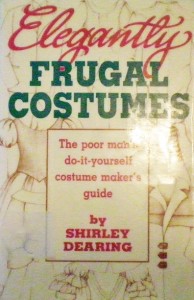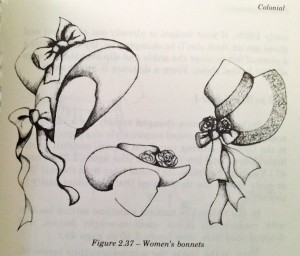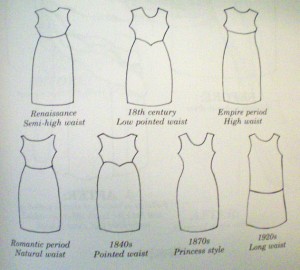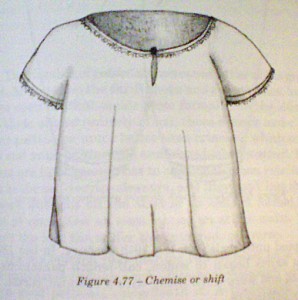Thursday’s Book Review: Elegantly Frugal Costumes
by Shirley Dearing
Rating
2 stars = Inferior
Description
How to make costumes using secondhand clothing. Mainly for school plays with zero budgets or quick Halloween costumes.
Liked
I liked the concept of this book: “The poor man’s do-it-yourself costume maker’s guide.” Some of the author’s suggestions have merit, such as cutting down linen shirts to create ancient-style tunics. She also shows examples of historic footwear and headgear, which is useful for those who don’t want to spend hours perusing books on historic fashion.
Disliked
Somewhere along the line, the author mistook “budget” for cheap, inaccurate, and badly sewn. Just because your costume requires a strict budget doesn’t mean you have to sacrifice quality. According to the author, “The costumer who gets hung up on authenticity spends too much money and time on a job that’s of no lasting worth.” I strongly disagree. If you enjoy making costumes, the process of designing and sewing is not worthless. There are ways to save time and money and still end up with something beautiful and of high quality.
Sadly, the author is misinformed about the basic silhouettes of historic garments. She provides a series of simple sketches for several of the major fashion periods, but these silhouettes have little in common with the actual garment shapes of those periods. If you follow her guidelines, you’re guaranteed to end up with a dress that looks like a cheap Halloween costume and not a historical costume.
The author is also misinformed about historic undergarments. She illustrates a chemise or shift as being waist-length, when in fact they usually reached close to the knees. She says that only “affluent” women wore them, which is blatantly false. Chemises were the basic undergarment for all women. Any worthwhile book on historic costuming will tell you this, and it’s backed up by historical evidence. Also, she mistakenly calls ladies’ drawers “pantaloons,” which were actually a men’s garment. This is a common mistake, but a grave one.
She claims that it isn’t practical to spend time on quality sewing, so don’t be upset by crooked or unfinished seams, or puckering zippers. Don’t be misled—crooked seams and ill-sewn zippers will show and your garment will look dreadful. If you’re going to take the time to create something and put your name to it, make it something you can be proud of!
Conclusion
While this book does have a few good ideas, the author knows nothing about proper sewing techniques or historical costuming. Her ideas might be great for an elementary school’s theater department, but once you get to high school and college, the quality needs to be better. I’ve attended school productions where the costumes were badly sewn thrift store remakes—and it seriously detracted from my enjoyment of the play. Don’t make the mistake of thinking no one will notice.
If you feel you must have this book to round out your collection, you can buy it used or new from Amazon.com: Elegantly Frugal Costumes.
(Yesterday’s Thimble is a participant in the Amazon Services LLC Associates Program. Basically, this means if you click a link to an item that Amazon sells, and then buy it, I earn a small fee that helps support this website.)
~~*~~
Have you read this book? Do you agree or disagree with my review?




